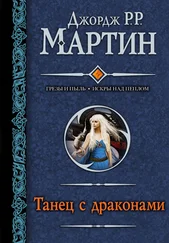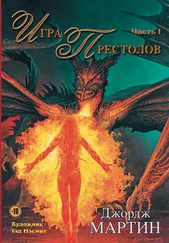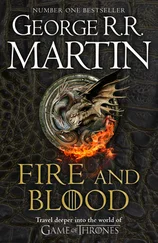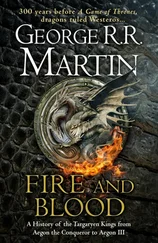Lady Myrielle brought the doll with her when she made her own appearance at the ball, cradling it in her arms as if it were a babe. She was not the first to be presented (that honor went to the daughter of the Prince of Pentos), nor the last (Henrietta Woodhull, daughter of a landed knight from the Paps). Her father had seen to it that she came before the king late in the first hour, far enough back so he could not be accused of giving her pride of place, but far enough forward so King Aegon would still be reasonably fresh. When His Grace greeted Lady Myrielle by name and said not only, “It was good of you to come, my lady,” but also, “I am pleased you like the doll,” her father surely took heart, believing that all his careful scheming had borne fruit.
Yet it would all be undone in a trice by the king’s half-sisters, the very twins whose succession Unwin Peake had been so determined to prevent. Fewer than a dozen maids remained, and the press had thinned considerably, when a sudden trumpet blast heralded the arrival of Baela Velaryon and Rhaena Corbray. The doors to the throne room were thrown open, and the daughters of Prince Daemon entered upon a blast of winter air. Lady Baela was great with child, Lady Rhaena wan and thin from her miscarriage, yet seldom had they seemed more as one. Both were dressed in gowns of soft black velvet with rubies at their throats, and the three-headed dragon of House Targaryen on their cloaks.
Mounted on a pair of coal black chargers, the twins rode the length of the hall side by side. When Ser Marston Waters of the Kingsguard blocked their path and demanded they dismount, Lady Baela slashed him across the cheek with her riding crop. “His Grace my brother can command me. You cannot.” At the foot of the Iron Throne they reined up. Lord Unwin rushed forward, demanding to know the meaning of this. The twins paid him no more heed than they would a serving man. “Brother,” Lady Rhaena said to Aegon, “if it please you, we have brought your new queen.”
Her lord husband, Ser Corwyn Corbray, brought the girl forward. A gasp went through the hall. “Lady Daenaera of House Velaryon,” boomed out the herald, somewhat hoarsely, “daughter of the late and lamented Daeron of that house and his lady wife, Hazel of House Harte, also departed, a ward of Lady Baela of House Targaryen and Alyn the Oakenfist of House Velaryon, Lord Admiral, Master of Driftmark, and Lord of the Tides.”
Daenaera Velaryon was an orphan. Her mother had been carried off by the Winter Fever; her father had died in the Stepstones when his True Heart went down. His own father had been that Ser Vaemond beheaded by Queen Rhaenyra, but Daeron had been reconciled with Lord Alyn and had died fighting for him. As she stood before the king that Maiden’s Day, clad in pale white silk, Myrish lace, and pearls, her long hair shining in the torchlight and her cheeks flush with excitement, Daenaera was but six years old, yet so beautiful she took the breath away. The blood of Old Valyria was strong in her, as is oft seen in the sons and daughters of the seahorse; her hair was silver laced with gold, her eyes as blue as a summer sea, her skin as smooth and pale as winter snow. “She sparkled,” Mushroom says, “and when she smiled, the singers in the galley rejoiced, for they knew that here at last was a maid worthy of a song.” Daenaera’s smile transformed her face, men agreed; it was sweet and bold and mischievious, all at once. Those who saw it could not fail to think, “Here is a bright, sweet, happy little girl, the perfect antidote to the young king’s gloom.”
When Aegon III returned her smile and said, “Thank you for coming, my lady, you look very pretty,” even Lord Unwin Peake surely must have known that the game was lost. The last few maidens were brought forward hurriedly to do their turns, but the king’s desire to put an end to the parade was so palpable that poor Henrietta Woodhull was sobbing as she curtsied. As she was led away, King Aegon summoned his young cupbearer, Gaemon Palehair. To him was given the honor of making the announcement. “His Grace will marry Lady Daenaera of House Velaryon!” Gaemon shouted happily.
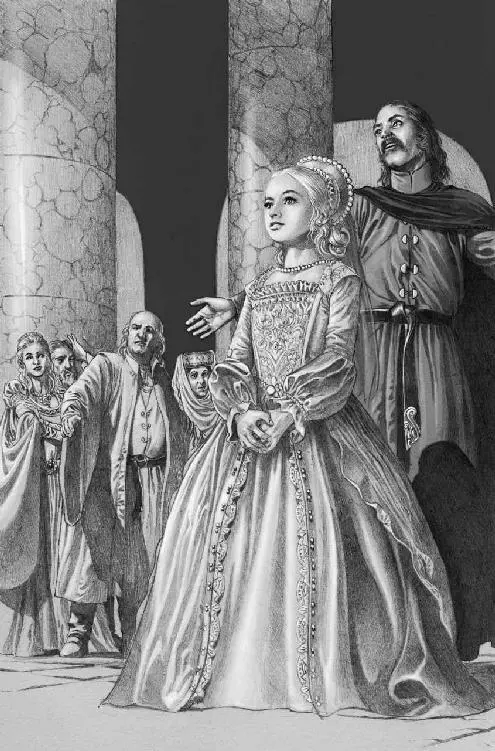
Caught in a snare of his own making, Lord Unwin Peake had no choice but to accept the king’s decision with as much grace as he could muster. In a council meeting the next day, however, he gave vent to his wroth. By choosing for his bride a girl of six, “this sulky boy” had thwarted the entire purpose of the marriage. It would be years before the girl was old enough to bed, and even longer until she could hope to produce a trueborn heir. Until such time the succession would remain clouded. The foremost duty of a regency was to guard the king against the follies of youth, he declared, “follies such as this.” For the good of the realm, the king’s choice must be set aside, so that His Grace might marry “a suitable maid of child-bearing age.”
“Such as your daughter?” asked Lord Rowan. “I think not.” Nor were his fellow regents more sympathetic. For once, the council remained adamant, defying the Hand’s wishes. The marriage would proceed. The betrothal was announced the next day, as scores of disappointed maidens streamed out the city gates for home.
King Aegon III Targaryen wed Lady Daenaera on the last day of the 133rd year since Aegon’s Conquest. The crowds that lined the streets to cheer the royal couple were significantly smaller than those who had come out for Aegon and Jaehaera, for the Winter Fever had carried off almost a fifth of the population of King’s Landing, but those who did brave the day’s bitter winds and snow flurries were delighted with their new queen, charmed by her happy waves, flushed cheeks, and shy, sweet smiles. Ladies Baela and Rhaena, riding just behind the royal litter, were greeted with exuberant cheers as well. Only a few took note of the King’s Hand farther back, with “his face as grim as death.”
Under the Regents—The Voyage of Alyn Oakenfist
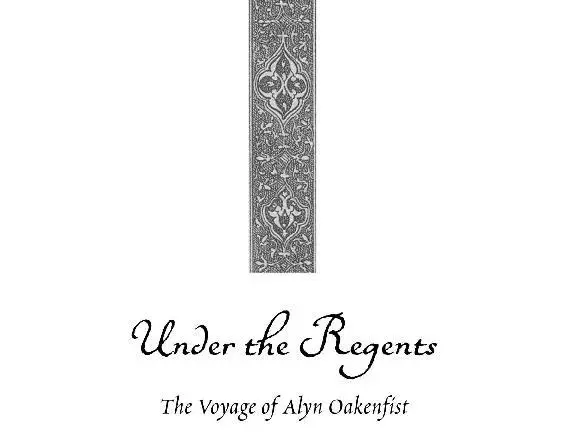
Let us leave King’s Landing for a time, and turn back the calendar to speak of Lady Baela’s lord husband Alyn Oakenfist on his epic voyage to the Sunset Sea.
The trials and triumphs of the Velaryon fleet as it made its way around “the arse of Westeros” (as Lord Alyn was wont to call it) could fill a mighty tome all by themselves. For those seeking the details of the voyage, Maester Bendamure’s Six Times to Sea: Being an Account of the Great Voyages of Alyn Oakenfist remains the most complete and authoritative source, though the vulgar accounts of Lord Alyn’s life called Hard as Oak and Bastard Born are colorful and engrossing in their ways, albeit unreliable. The former was written by Ser Russell Stillman, who squired for his lordship as a youth and was later knighted by him before losing a leg during Oakenfist’s fifth voyage, the latter by a woman known only as Rue, who may or may not have been a septa, and may or may not have become one of his lordship’s paramours. We shall not echo their work here, save in the broadest strokes.
Oakenfist displayed considerably more caution on his return to the Stepstones than he had on his previous visit. Wary of the ever-shifting alliances and studied treacheries of the Free Cities, he sent scouts ahead in the guise of fishing boats and merchantmen to discover what awaited him. They reported that the fighting on the islands had largely died away, with a resurgent Racallio Ryndoon holding Bloodstone and all the isles to the south, whilst Pentoshi sellswords in the hire of the Archon of Tyrosh controlled those rocks to the north and east. Many of the channels between the islands were closed by booms, or blocked by the hulks of ships sunk during Lord Alyn’s attack. Such waterways as remained open were controlled by Ryndoon and his rogues. Lord Alyn was thus confronted with a simple choice; he must needs fight his way past “Queen Racallio” (as the Archon had named him) or treat with him.
Читать дальше
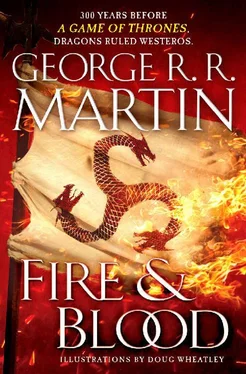


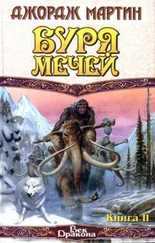
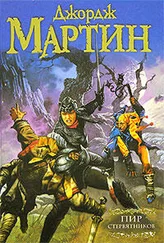

![Джордж Мартин - Сыны Дракона [лп]](/books/33039/dzhordzh-martin-syny-drakona-lp-thumb.webp)
